You can snap marker to the path by projection of marker on nearest path segment. Nearest segment you can find via PolyUtil.isLocationOnPath():
PolyUtil.isLocationOnPath(carPos, segment, true, 30)
and projections of marker to that segment you can find via converting geodesic spherical coordinates into orthogonal screen coordinates calculating projection orthogonal coordinates and converting it back to spherical (WGS84 LatLng -> Screen x,y -> WGS84 LatLng):
Point carPosOnScreen = projection.toScreenLocation(carPos);
Point p1 = projection.toScreenLocation(segment.get(0));
Point p2 = projection.toScreenLocation(segment.get(1));
Point carPosOnSegment = new Point();
float denominator = (p2.x - p1.x) * (p2.x - p1.x) + (p2.y - p1.y) * (p2.y - p1.y);
// p1 and p2 are the same
if (Math.abs(denominator) <= 1E-10) {
markerProjection = segment.get(0);
} else {
float t = (carPosOnScreen.x * (p2.x - p1.x) - (p2.x - p1.x) * p1.x
+ carPosOnScreen.y * (p2.y - p1.y) - (p2.y - p1.y) * p1.y) / denominator;
carPosOnSegment.x = (int) (p1.x + (p2.x - p1.x) * t);
carPosOnSegment.y = (int) (p1.y + (p2.y - p1.y) * t);
markerProjection = projection.fromScreenLocation(carPosOnSegment);
}
With full source code:
public class MainActivity extends AppCompatActivity implements OnMapReadyCallback {
private GoogleMap mGoogleMap;
private MapFragment mapFragment;
private Button mButton;
@Override
protected void onCreate(Bundle savedInstanceState) {
super.onCreate(savedInstanceState);
setContentView(R.layout.activity_main);
mapFragment = (MapFragment) getFragmentManager()
.findFragmentById(R.id.map_fragment);
mapFragment.getMapAsync(this);
mButton = (Button) findViewById(R.id.button);
mButton.setOnClickListener(new View.OnClickListener() {
@Override
public void onClick(View v) {
}
});
}
@Override
public void onMapReady(GoogleMap googleMap) {
mGoogleMap = googleMap;
mGoogleMap.setOnMapLoadedCallback(new GoogleMap.OnMapLoadedCallback() {
@Override
public void onMapLoaded() {
List<LatLng> sourcePoints = new ArrayList<>();
PolylineOptions polyLineOptions;
LatLng carPos;
sourcePoints.add(new LatLng(-35.27801,149.12958));
sourcePoints.add(new LatLng(-35.28032,149.12907));
sourcePoints.add(new LatLng(-35.28099,149.12929));
sourcePoints.add(new LatLng(-35.28144,149.12984));
sourcePoints.add(new LatLng(-35.28194,149.13003));
sourcePoints.add(new LatLng(-35.28282,149.12956));
sourcePoints.add(new LatLng(-35.28302,149.12881));
sourcePoints.add(new LatLng(-35.28473,149.12836));
polyLineOptions = new PolylineOptions();
polyLineOptions.addAll(sourcePoints);
polyLineOptions.width(10);
polyLineOptions.color(Color.BLUE);
mGoogleMap.addPolyline(polyLineOptions);
carPos = new LatLng(-35.281120, 149.129721);
addMarker(carPos);
mGoogleMap.moveCamera(CameraUpdateFactory.newLatLngZoom(sourcePoints.get(0), 15));
for (int i = 0; i < sourcePoints.size() - 1; i++) {
LatLng segmentP1 = sourcePoints.get(i);
LatLng segmentP2 = sourcePoints.get(i+1);
List<LatLng> segment = new ArrayList<>(2);
segment.add(segmentP1);
segment.add(segmentP2);
if (PolyUtil.isLocationOnPath(carPos, segment, true, 30)) {
polyLineOptions = new PolylineOptions();
polyLineOptions.addAll(segment);
polyLineOptions.width(10);
polyLineOptions.color(Color.RED);
mGoogleMap.addPolyline(polyLineOptions);
LatLng snappedToSegment = getMarkerProjectionOnSegment(carPos, segment, mGoogleMap.getProjection());
addMarker(snappedToSegment);
break;
}
}
}
});
mGoogleMap.animateCamera(CameraUpdateFactory.newLatLngZoom(sourcePoints.get(0), 15));
}
private LatLng getMarkerProjectionOnSegment(LatLng carPos, List<LatLng> segment, Projection projection) {
LatLng markerProjection = null;
Point carPosOnScreen = projection.toScreenLocation(carPos);
Point p1 = projection.toScreenLocation(segment.get(0));
Point p2 = projection.toScreenLocation(segment.get(1));
Point carPosOnSegment = new Point();
float denominator = (p2.x - p1.x) * (p2.x - p1.x) + (p2.y - p1.y) * (p2.y - p1.y);
// p1 and p2 are the same
if (Math.abs(denominator) <= 1E-10) {
markerProjection = segment.get(0);
} else {
float t = (carPosOnScreen.x * (p2.x - p1.x) - (p2.x - p1.x) * p1.x
+ carPosOnScreen.y * (p2.y - p1.y) - (p2.y - p1.y) * p1.y) / denominator;
carPosOnSegment.x = (int) (p1.x + (p2.x - p1.x) * t);
carPosOnSegment.y = (int) (p1.y + (p2.y - p1.y) * t);
markerProjection = projection.fromScreenLocation(carPosOnSegment);
}
return markerProjection;
}
public void addMarker(LatLng latLng) {
mGoogleMap.addMarker(new MarkerOptions()
.position(latLng)
);
}
}
you'll got something like that:

But better way is to calculate car distance from start of the path and find it position on path via SphericalUtil.interpolate() because if several path segments is close one to another (e.g. on different lanes of same road) like that:

to current car position may be closest "wrong" segment. So, calculate distance of the car from the start of the route and use SphericalUtil.interpolate() for determine point exactly on path.

